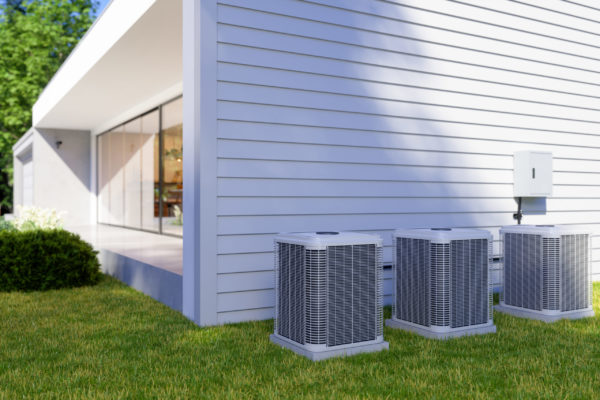If you’re a homeowner that recently purchased a heat pump system to heat and cool your home, congratulations! You’re the proud owner of a cutting-edge HVAC system that offers unbeatable efficiency and an environmentally friendly operation. As we head into the winter heating system, however, you’re bound to have some questions about some of the things your heat pump does when the weather turns cold.
One of those things is its regular defrost mode cycles. It’s a feature that’s unique to heat pumps and one that homeowners often don’t quite understand. To remedy that, here’s an explanation of your heat pump’s defrost mode and why your heat pump activates it from time to time.
What Is the Defrost Mode?
Heat pumps achieve their high efficiency due to the fact that they don’t create or destroy heat. Instead, they move existing heat from one place to another. In the summer, a heat pump removes heat from your home and vents it into the outdoors. In the winter, it extracts heat from the outdoor air and uses it to warm up your indoor spaces.
This is possible because even on cold days, a heat pump can use the temperature differential of its super-cold refrigerant and the outside air to produce heat. The trouble is, it does this by pumping the refrigerant through the coils in its outdoor unit and blowing air across them. When the temperature outside gets cold enough, the coils can develop frost and impede airflow. That’s where defrost mode comes into play.
Defrost mode temporarily reverses the operation of a heat pump to melt any accumulated frost on the outdoor coils. It will only do this when the outdoor temperature drops below 32 degrees Fahrenheit. It’s a normal part of a heat pump’s operation in the winter and isn’t anything to worry about.
How Does the Defrost Mode Operate?
The defrost mode on your heat pump prevents frost buildup from interfering with the unit’s operation. When airflow through the outdoor coils gets blocked, the heat pump won’t be capable of extracting heat from the outside air. To prevent that from happening to heat pumps, they have a frost sensor that monitors the temperature of the outdoor coils. If they drop below freezing, the unit activates the defrost mode to warm the coils. Most heat pumps aim for an outside coil temperature of around 57 degrees Fahrenheit before returning to normal operation.
Some heat pumps have a defrost mode that works on a timer instead. They’ll activate the defrost mode at intervals of 20, 60, or 90 minutes to prevent frost buildup on the outdoor coils. Those cycles will continue to run as long as the coil temperature keeps returning to below 32 degrees Fahrenheit.
How Long Are Defrost Mode Cycles?
When your heat pump enters defrost mode, you can expect the cycle to last anywhere from 30 seconds to several minutes. In general, the colder it is outside, the longer the defrost cycles will last. That’s to allow enough time for the coils to warm and melt any frost buildup.
Some other factors can affect the length of your heat pump’s defrost cycles. For example, you can expect the defrost cycles to last a bit longer when it’s especially humid outside. That’s because the added humidity will increase the frost buildup, which will trigger a defrost cycle and make it harder for the heat pump to melt the accumulated frost. The same is true when you’re demanding more heat from your heat pump on a cold day. Doing that will lower the temperature of the outside coils much faster and trigger more frequent defrost cycles.
How Can I Tell if My Heat Pump Has a Problem?
Even though defrost cycles aren’t anything unusual for a heat pump operating in the winter, there are some situations where defrost cycles indicate a problem. To understand when your heat pump needs servicing, you need to know what to look for. There are some situations where defrost cycles are a symptom of a problem. These include:
- Defrost cycling at temperatures above 32 degrees Fahrenheit
- Inappropriately long defrost cycles
- Ice buildup on the outdoor unit after defrost cycling
- Lack of warm air indoors after defrost cycling
If you notice your heat pump exhibiting any of the above symptoms, you should call the experts here at North Point Air Conditioning & Heating right away.
Trust the Heat Pump Specialists
Heat pumps make an excellent addition to any home here in Spring, TX. So, if you’re considering upgrading your home’s HVAC system anytime soon, you should consider purchasing one. When that time comes, there’s nowhere better to turn than North Point Air Conditioning & Heating. We provide a complete range of heating and cooling services, as well as sales and service of the latest in heat pump technology.
So, don’t wait another moment. Contact North Point Air Conditioning & Heating today to discuss a heat pump for your home in Spring.


